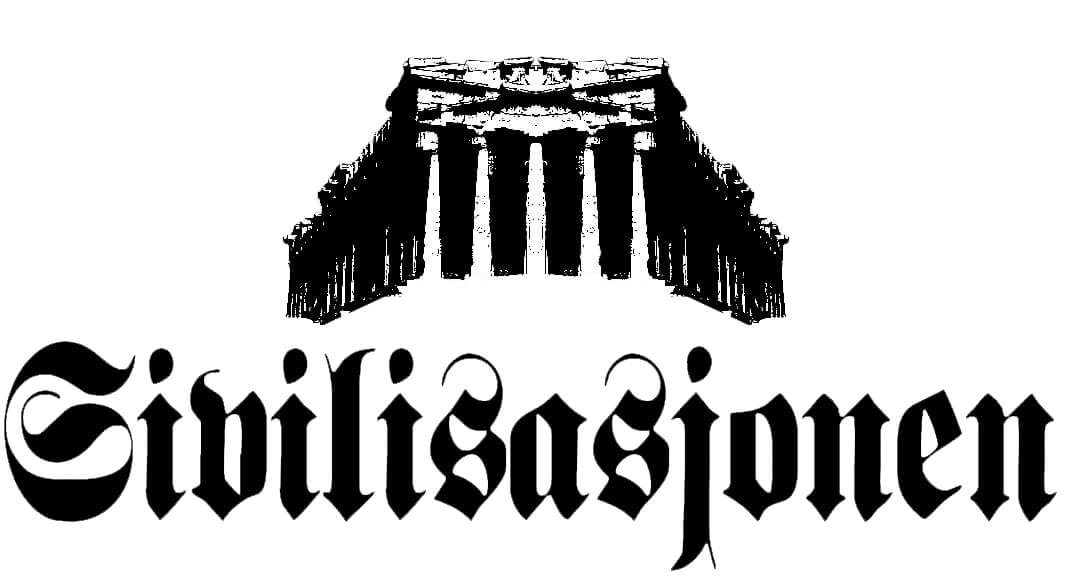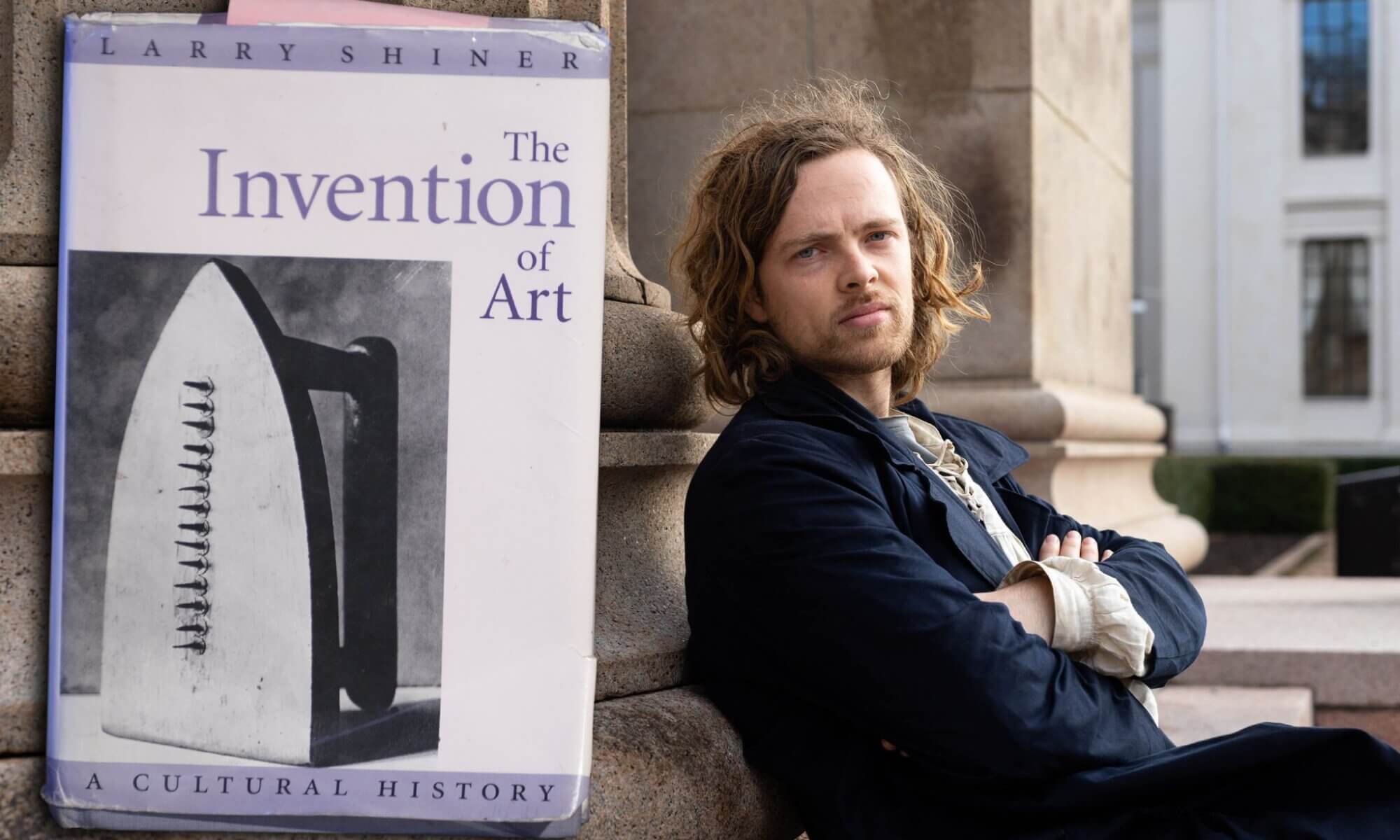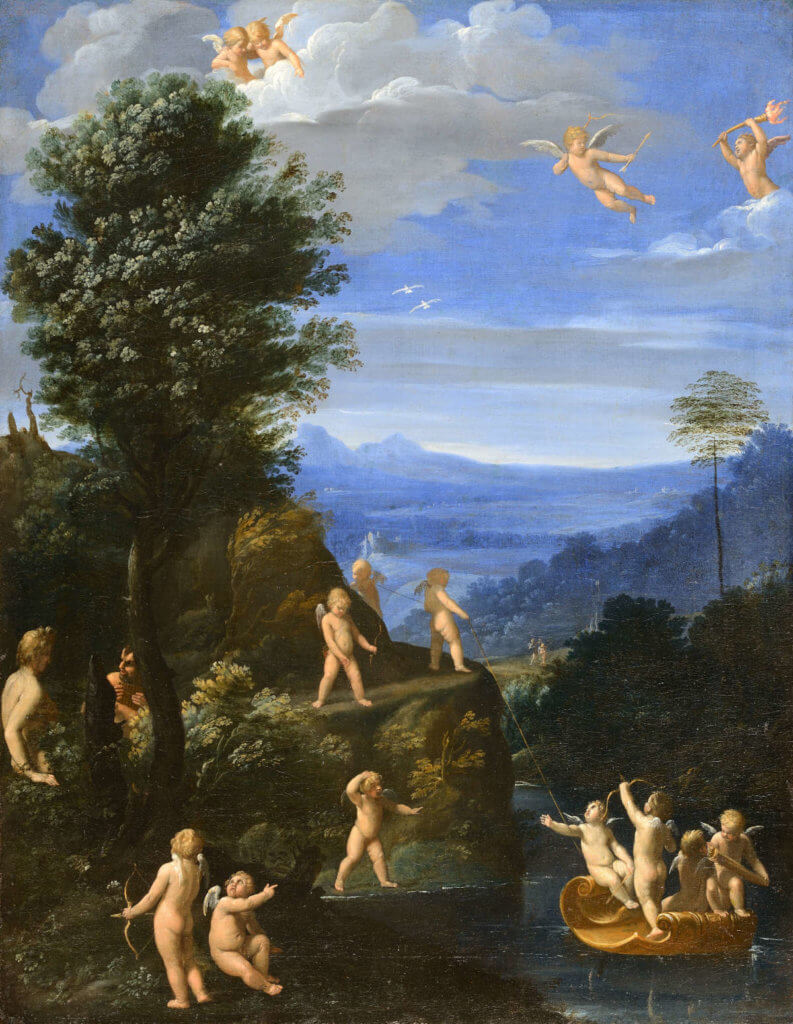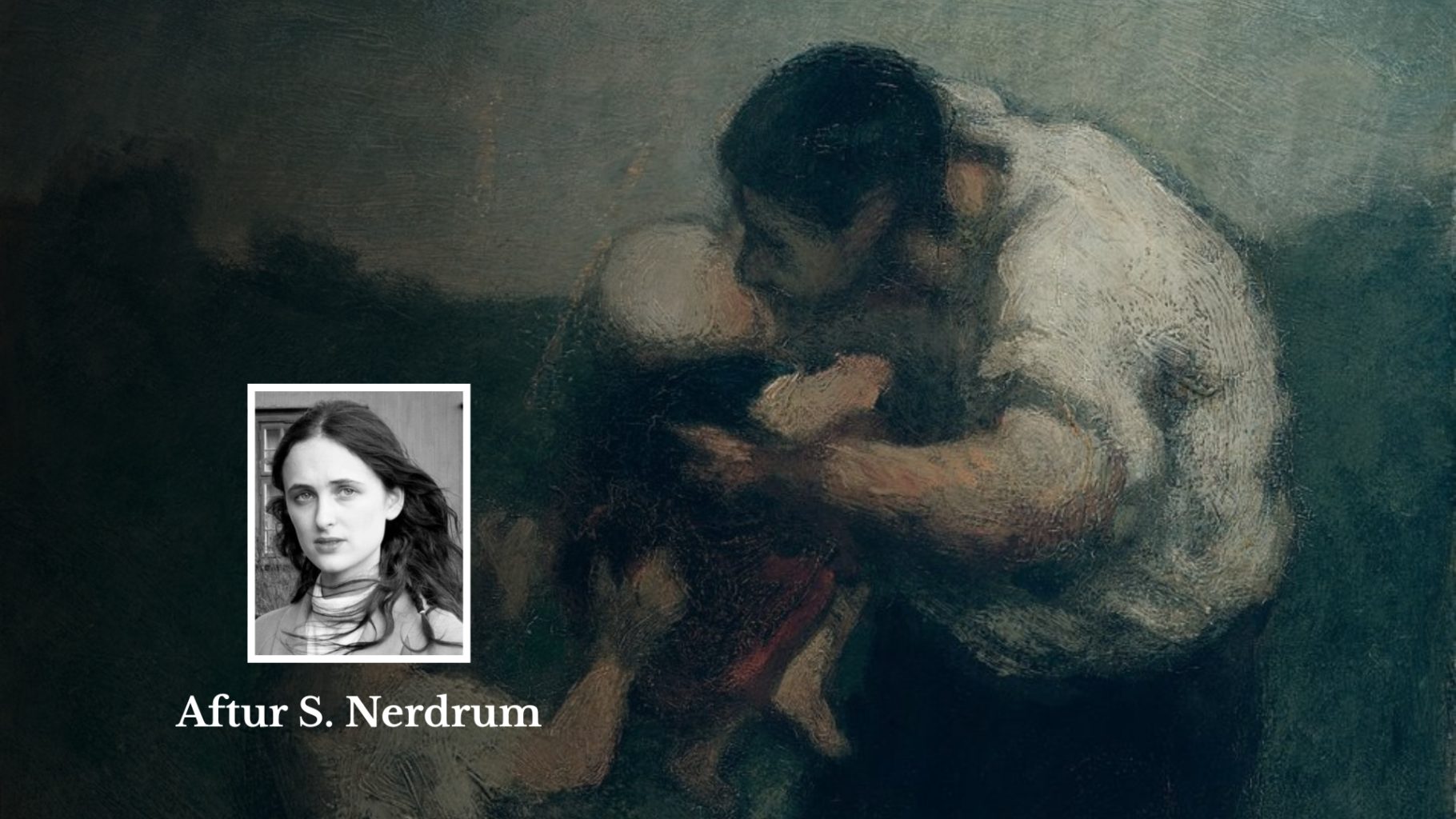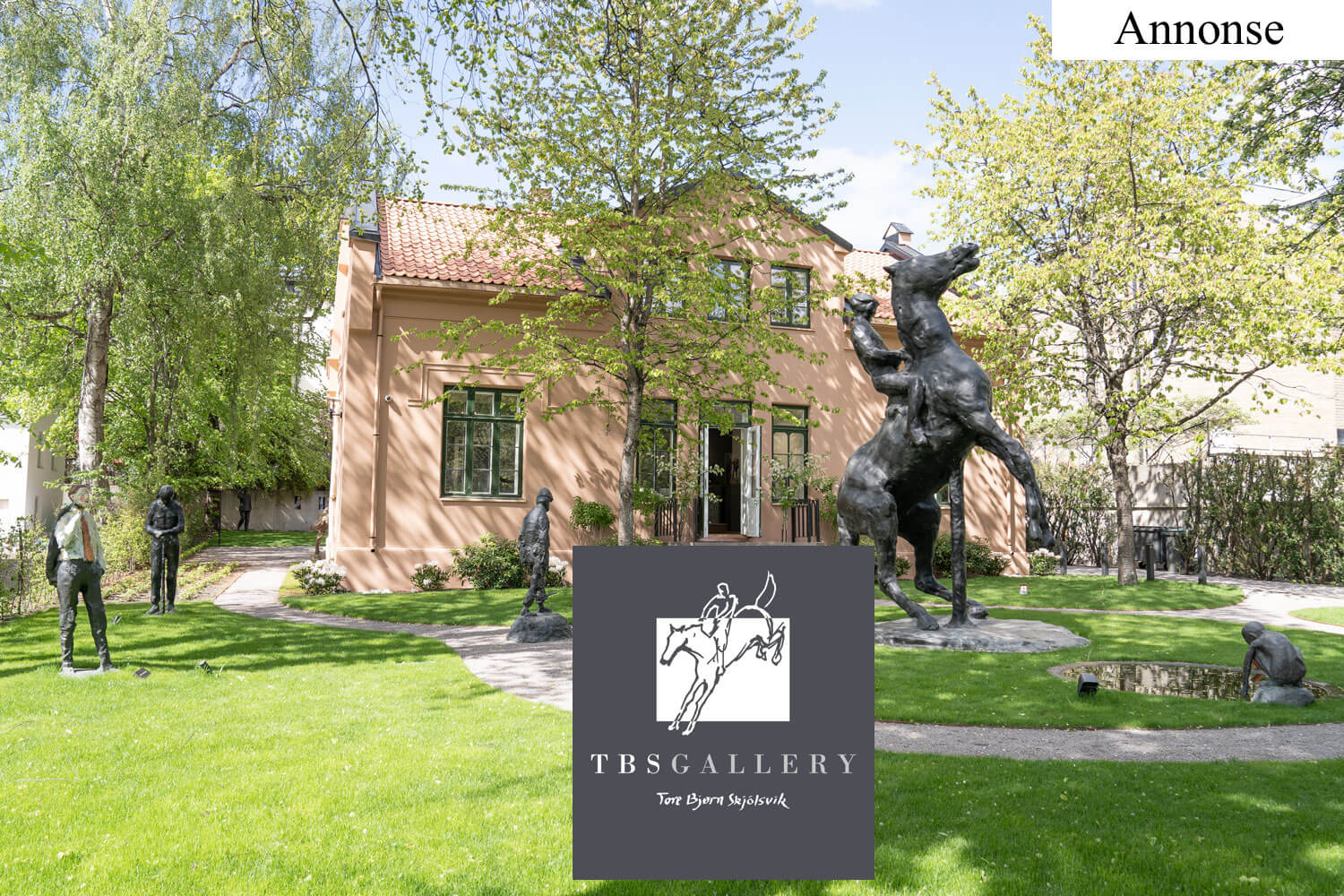To understand modern culture and more specifically “modern art”, professor Larry Shiner’s “The Invention of Art” (2001) is a must-read and an eye-opener for anyone who thinks they know a bit about art history.
The book is as surprising in its content as the title suggests. You would think you were being messed with if you were told that Art history is barely 250 years old. But this is the thesis of Shiner’s book and he makes a convincing case for it.
To start off with a broad stroke, “The long eighteenth century” was the period when many of the modern ideals were established. People began to speak in a similar manner as we do today, institutions such as the secular concert hall and the art museum were introduced for the first time, and countries in the Western world started worshipping the idea of progress.
It is therefore not coincidental that the term “modernism” was coined at this time, meaning “deviation from the ancient and classical manner”, which is the exact opposite of what it meant to be a “modern” man in the Renaissance. Craftsmen in 16th century Europe considered ancient Greece to represent the highest standard and strived to become their equal. In the Enlightenment Period, the “modernistic” man turned his head towards the future, insisting that he lived in a superior time to any other.
The “Art” problem
A key point in Shiner’s book is the change of language that took place in the course of the 18th century. He argues that “the illusion that the modern ideals and practices of art are universal and eternal or at least go back to ancient Greece or the Renaissance has been easier to swallow thanks to an ambiguity in the word ‘art’ itself.”
The word “art” can be traced far back in time, but Shiner points out the significant difference between the 18th century definition of “Art” as in an autonomous “artwork”, and the older definition of “an art” (science or skill). He writes that “the concept of art was split apart, generating the new category fine arts (poetry, painting, sculpture, architecture, music) as opposed to crafts and popular arts (shoemaking, embroidery, storytelling, popular songs etc.)”
He concludes that “for over two thousand years Western culture had no word or concept of fine art, viewed the artisan / artist as a maker rather than creator, and generally treated statues, poems, and musical works as serving particular purposes rather than existing primarily for themselves.”
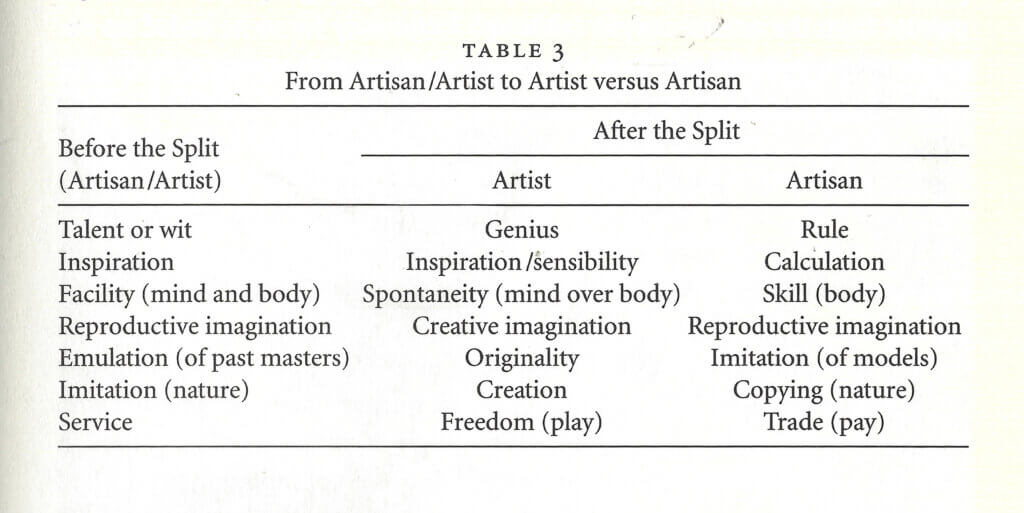
Since the Renaissance, “Artisan” and “artist” had been used interchangeably to designate anything from blacksmiths to narrative painters — although “artisan” was much more common. But in the mid 1700s, a split occurred and while the “artisans” were now seen as brainless, mechanic craftspeople, the “artists” acquired the status of refined genius, or as Rousseau called them: “these self-important fellows” who “work solely for the idle rich”.
To put this in a historical perspective, Shiner references Leonardo’s collaborative commission in the 15th century to make the altar piece “The Virgin of the Rocks”. He and the other painter sued the apostolate because the carver of the wooden framework was being paid more than they were. And as we learn from Larry Shiner, this (with modern eyes) “horrendous” treatment of a “superior artist” was not uncommon.
The early catalysts of modernism
Larry Shiner’s book is the result of great academic study. The amount of references in this book could easily make you drift into endless rabbit holes in search for the starting point of the modern concept of art. To summarize, I will go through some of the major factors which he covers in the book.
1. Conflating natural science and poetry
8. Shiner points to something he calls “the institutionalization of science as a distinct realm of activity”. By the 18th century, the belief in scientific progress was so grounded in general thought, that some authors applied the language of natural science to poetry. One such example being the Scottish professor, Alexander Gerrard, who writes in his essay “On the Genius” (1774) that invention is the foremost property of any poet, and that “mere” imitators, who might improve upon their inventive master, should nonetheless be dismissed as secondary.
He goes as far as to denounce all poets inferior to the supreme genius of Homer, who lived in a primitive stage of civilization and “had no model by which he could direct his conceptions”. Naturally, Gerrard would probably retract some of his statements, had he known that an “amateur-archeologist” in the nineteenth century called Heinrich Schliemann would unearth the legendary city of Troy — which is the location in which Homer’s epic poem “The Iliad” is set.
2. God is dead, long live the Genius
Religion was on the decline during the Enlightenment Period and people were looking for something that could replace their need for a “transcendental spiritual role of revealing higher truth or healing the soul”, as Shiner puts it. He argues that the idea of disinterested contemplation, which had primarily been applied to God, now applied to Art.
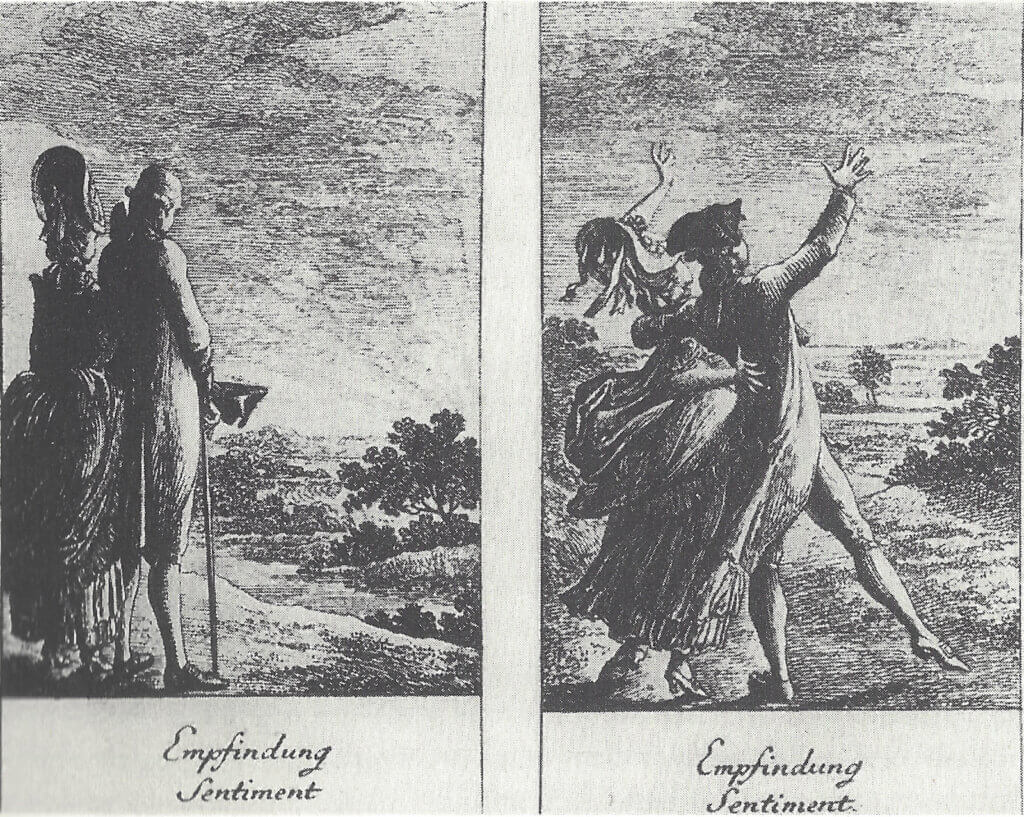
The Renaissance injunction (from Horats) that poetry should “please and instruct” was simultaneously reduced to some kind of unfathomable pleasure alone.
Among the philosophers, Kant is perhaps the philosopher who spoke about the poetic arts with a religious language more than any other. One could argue that Kant wrote The Critique of Judgment to save people’s faith in religion. His idea of the Genius (with a big G) is that of an innocent, ignorant, indifferent being, impregnated with mystical ideas by something akin to the holy spirit.
To Kant, Art is like faith. It has nothing to do with ulterior interests, nor does it have a function or purpose — or as Kant would say about flowers: they have “purposiveness without a purpose”.
3. “Bodies without soul” on the museum wall
The art museum as we know it today, did not exist prior to the late 18th century. In fact, the first public art museum came into existence as the result of The French Revolution. Thirsty for revenge, the mob plundered the castles of noblemen all over the country; destroying the paintings and sculptures of royalty. Eventually, the statesman Pierre Cambon came up with the idea to use the monuments of royalty to “form a museum”. By placing them in a museum, Cambon emphasized, “we will destroy the idea of royalty” and at the same time ”preserve the masterpieces.” And thus, the Musé du Louvre opened to the public in 1793. But the philosopher Antoine Quatramére saw the birth of the new institution with scepticism. He argued that it set up a “vicious circle in which the only aim of a work of art is to engender other works of art”. In the museum, according to Quatramére, paintings and sculptures become “bodies without soul, empty simulacra, deprived of action, feeling and life.” Larry Shiner calls it “a far more powerful impetus toward “Art for Art’s sake” than any later aestheticist pronouncement.”
The Reception
Although Larry Shiner covers the development of Art until the present in great detail, I thought I would share some thoughts about the reception of the ideas that circled in Europe in the 1700s.
The 19th and 20th centuries witnessed a gradual establishment of the ideas from the Enlightenment Period and the Romantic Period. Cezanne, Kandinsky and Duchamp are all so-called pioneers of modernism, but they also share inspiration from 18th and 19th century pioneers of Art theory.
1. Cezanne’s more than forty unmixed colors on the palette and his claim that he allows, without foundation in experience or thinking in the process, the colors as incarnate ideas, beings of pure reason, to “arrange themselves the way they like,” sounds much like Immanuel Kant’s theory of pure colors and tasteful judgment a priori.
2. “Every work of art is the child of its age” and “each period of culture produces an art of its own which can never be repeated,” are sentences that could easily have been formed by Georg Friedrich Hegel, but they stem from Kandinsky’s manifesto.
3. “My idea was to choose an object that wouldn’t attract me, either by its beauty or by its ugliness. To find a point of indifference in my looking at it,” is not a statement on pure judgment of taste by Immanuel Kant, but a statement by Marcel Duchamp on his readymades.
As far as I can see, though, neither Cezanne, Kandinsky nor Duchamp have made any reference to their masters. Perhaps because it would make them look inartistic, kitschy and unoriginal — shamelessly borrowing their thoughts from others?
On a final note, Larry Shiner concludes that (fine) art is a historical construction of the 18th century. But then he says that “we cannot resurrect the old system of art,” arguing that “the divisions of the fine art system can only be transcended through a continuing struggle.”
I would argue that the old system of art (as in science not Art) has been resurrected before, namely in the Renaissance, when the Italians revived the culture of Ancient Greece.
And if a willful few could pull it off in the Renaissance, then perhaps a willful few could do it again.
Some are currently attempting it by giving up the word “Art” (which is a recent invention and precursor of modernism), trying to establish a fresh and needed alternative under the name of Kitsch.
